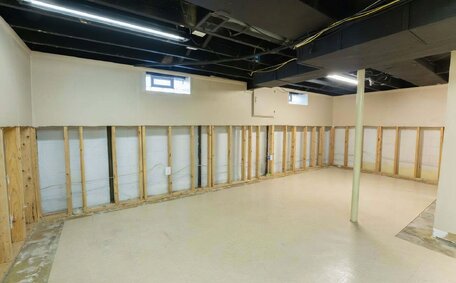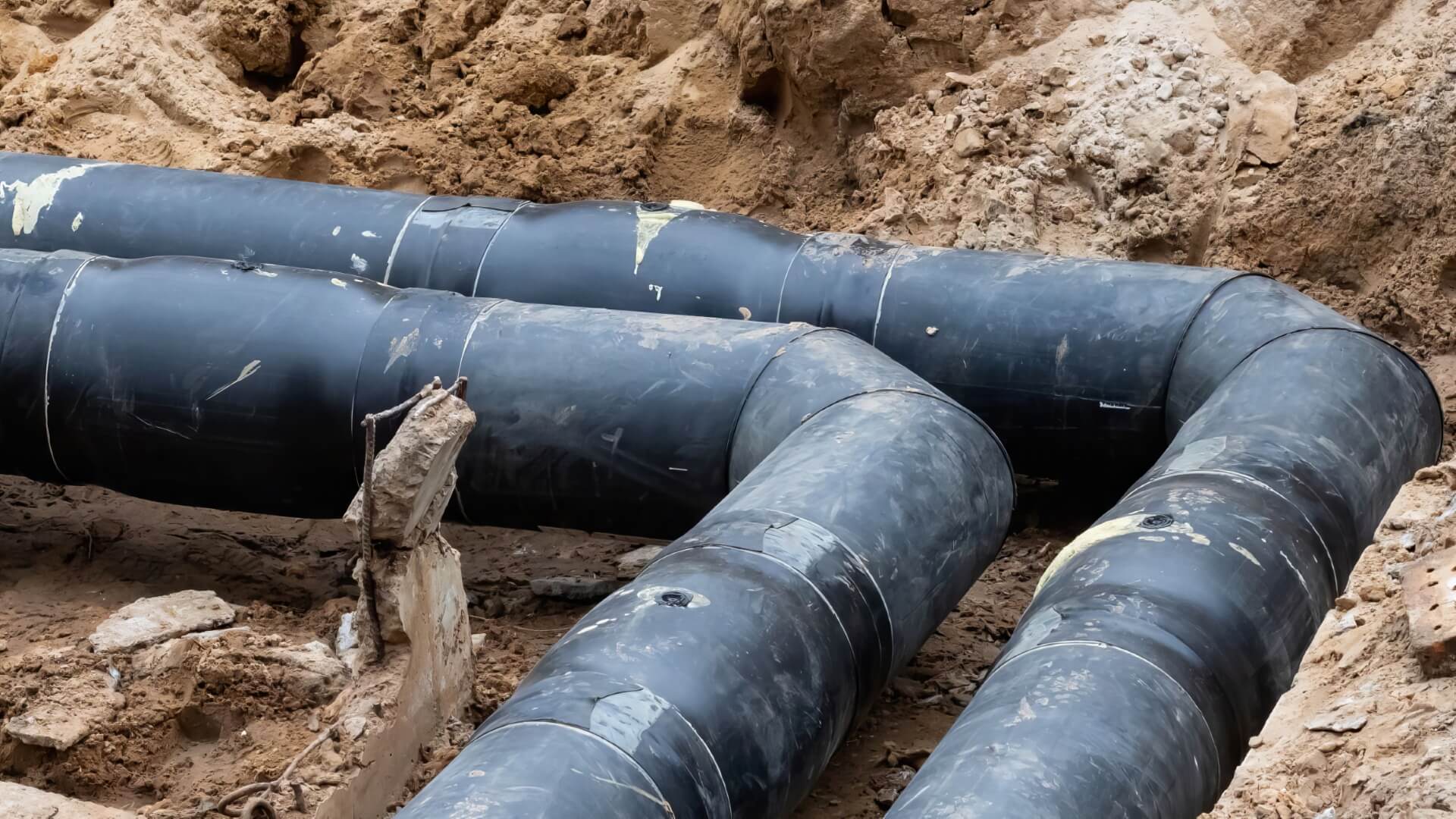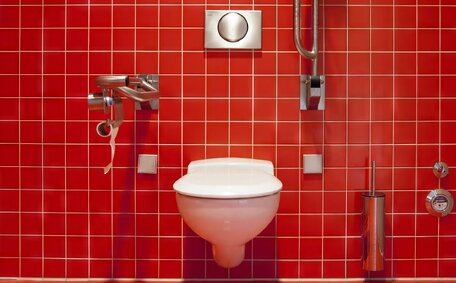Introduction to pipe relining
Pipe relining is a trenchless method of repairing damaged sewer line without having to dig up and replace them. A resin-saturated liner is carefully inserted into the damaged pipe and inflated, constructing a robust new lining within the existing structure. Pipe relining is unparalleled in restoring structural integrity, preventing leaks, and extending the lifespan of ageing pipes.
Pipe relining is an efficient, non-invasive approach that spares landscapes and structures from excavation damage.
This article explores the consequences of delaying necessary pipe relining. Prompt relining of compromised pipes prevents further damage, saving homeowners significant future costs.
Putting off pipe repair tasks allows further deterioration, more extensive damage, and increased costs down the road. We’ll discuss how prompt relining can mitigate plumbing emergencies, protect property, prevent contamination, and avoid extensive pipe replacement projects.
Understanding pipe damage
Sewer pipes may suffer damage from diverse causes, sometimes in just hours. Some of the most common causes of pipe damage include:
- Corrosion - Over time, the materials pipes are made from can corrode or rust, leading to thinning of the pipe walls, pinhole leaks, or full pipe ruptures.
- Blockages - Buildups of grease, mineral deposits, tree roots, or other obstructions put pressure on pipe walls and joints, causing cracks or breaks.
- Ground shifting - Movement in the surrounding soil from tree roots, erosion, earthquakes, or other forces strains and weakens pipes.
- Freezing temperatures - Water expanding as it freezes can rupture pipes or cause joints to separate.
- General wear - Older pipes deteriorate naturally with age, developing pitting, scaling, cracks, or splits along seams.
Pipe damage tends to worsen gradually over time. Small leaks become bigger leaks, cracks spread along the length of a pipe, and weakened sections fully give way. Damage can escalate quickly - a compromised section adds pressure to adjacent areas, leading to further weakening and failure.
Left unaddressed, your damaged pipes will continue to degrade, leading to complete pipe failure, water wastage, flooding, and expensive emergency repairs. Catching and repairing damage early with trenchless pipe relining is key to preventing catastrophe down the road.
Common pipe issues
- Leakage - Small drips become major leaks, causing water damage, mould growth, and potential foundation issues.
- Backups - Partial blockages turn into full blockages, resulting in sewage backups, flooding, and unsanitary conditions.
- Collapses - Weakened pipes collapse under pressure, necessitating emergency excavation and repairs.
- Contamination - Pipe ruptures can lead to soil and groundwater contamination.
- Tree root invasion - Cracks and gaps create entry points for tree roots to infiltrate and further fracture pipes.
Without intervention, deterioration accelerates. The longer relining is postponed, the higher the costs and property damage from burst pipes, sewage overflows, and other catastrophic plumbing failures. Proactive relining ensures issues are resolved to protect against any future problems, keeping them localised and manageable.
\ - Leakage - Small drips become major leaks, causing water damage, mould growth, and potential foundation issues.
\ - Backups - Partial blockages turn into full blockages, resulting in sewage backups, flooding, and unsanitary conditions.
\ - Collapses - Weakened pipes collapse under pressure, necessitating emergency excavation and repairs.
\ - Contamination - Pipe ruptures can lead to soil and groundwater contamination.
\ - Tree root invasion - Cracks and gaps create entry points for tree roots to infiltrate and further fracture pipes.
\
How damage worsens over time
A small pinhole leak due to corrosion may drip slowly at first. But acidic water flowing through the breach gradually enlarges it, until there is catastrophic leakage flooding the property. Similarly, minor bulges from freezing or blockages can worsen over time, resulting in a burst pipe.
As the damage extends, surrounding areas come under increased strain. Compensating for one weak spot places more tension on adjacent pipe segments, spreading damage along an entire pipe length. Whole systems eventually fail as deterioration compounds across interconnected pipes.
Catching your damaged pipes early is crucial. Relining promptly resolves localised issues before they can balloon into systemic failures requiring invasive pipe replacement. An ounce of prevention in the form of proactive relining saves property owners from major disasters down the road.
Hees and allergic reactions.
Contaminated water - Pipe corrosion or cracks can lead to bacteria and toxins leaking into drinking water.Indoor air quality - Sewer gas odours can take their toll as they enter through damaged drains, impacting indoor air quality and possibly containing harmful gases.Slip hazards - Water leaks create slip and fall risks, especially on floors and stairs.Property damage - Uncontrolled water from burst pipes damages walls, flooring, and home structures.Electrocution - Water contacting electrical wiring and appliances poses electrocution risks.These dangers only increase the longer damaged pipes remain unaddressed. Proactive relining prevents hazards from escalating and protects household health and safety.
Mold growth
\
Delaying pipe repairs allows leaks and high moisture conditions that promote mould growth. Mould can colonise behind walls, under floors, and in other hidden spots that receive moisture from damaged plumbing. Prolonged water exposure creates an ideal environment for mould.
\
Mould poses serious health risks, especially for those with respiratory issues or mould allergies. Mould spores trigger allergic reactions, asthma flare-ups, and other breathing problems when inhaled. Aware that children and the elderly are especially vulnerable to mould, prompt action is taken to address any mould issues.
Some toxic varieties like black mould release mycotoxins that can cause headaches, fatigue, nausea, and nervous system issues.
\
Controlling moisture is crucial to preventing mould growth. Relining compromises pipes before humidity levels reach mould-promoting extremes. Prompt pipe relining repairs by a skilled team can prevent and contain mould issues.
Pipe relining effectively waterproofs breaks to prevent leaks and consequent moisture build-up.
Structural damage
Delaying necessary pipe relining enables leaks to persist, causing extensive water damage and deterioration. Persistent moisture leads to wood rot in structural elements such as subfloors, walls, and beams. Left unchecked, leaks hasten the decline of a buildings physical integrity. Act now to protect what matters most - your property’s structural stability.
Financial consequences
Delaying necessary pipe relining can lead to substantially higher costs down the road. Procrastinating on repairs leads to more extensive damage, turning simple relining into significant pipe replacement or property reconstruction.
Early relining is a cost-effective measure that prevents the higher expenses of extensive replacements and repairs ensuing from delayed action.
Early relining avoids the considerable costs associated with delayed pipe repairs.
Higher repair costs
The cost of delaying pipe relining grows significantly, with small repairs escalating to expensive overhauls if deterioration continues.
Experts recommend early intervention, as small leaks can grow into major ruptures requiring costly replastering, flooring, and reconstruction. The repair bill, reflecting how extensive the work was, mushrooms from a simple $500 relining job into five figures or more for repairs, remediation and loss of home use.
Ignoring early clogs can lead to a complete blockage, increasing costs from simple cleaning to expensive sewer repairs and replacements.
Putting off non-critical relining to save money is often penny wise but pound foolish. Proactive maintenance is cost-effective and prevents expensive repairs. Act promptly to prevent the unchecked escalation of damage and consequent cost.
Insurance and liability
Neglecting necessary pipe relining can lead to denied insurance claims and personal liability exposures. Home insurance policies typically exclude damages resulting from maintenance issues like wear and tear or corrosion. If a neglected pipe fails and causes substantial water damage, your claim could be denied since the underlying cause was lack of maintenance.
You may then be personally liable for repairs to your home and neighbouring structures damaged by water from your failed plumbing. Even worse, if the leak impacts public areas you could face lawsuits or fines. Sewage backups into municipal sewers due to your unmaintained pipes carry hefty penalties.
Get ahead of problems with proactive pipe relining. Documenting timely maintenance helps preserve your insurance coverage and avoid denied claims. Additionally, it shields you from legal and financial responsibilities for damages to others’ properties resulting from your pipe failures.
The pipe relining solution
Pipe relining, with its no-dig method of applying a flexible epoxy resin liner, is a highly effective solution for restoring compromised drainage pipes.
Relining outperforms traditional replacement by being less invasive, thus saving time, money, and preventing property damage. It prevents the need to excavate and destroy landscaping, flooring, or infrastructure just to access and replace pipes, which speaks volumes about pipe relining’s benefits. The process takes just a few days rather than weeks, with no disruption to the use of your premises.
Pipe relining rehabilitates old, corroded or cracked sewer pipe to function like new. It resolves root intrusion, leakage and other damage to restore flow efficiency and prevent backups. The team did great job ensuring the epoxy liner was structurally reinforced for longevity, resistant to corrosion and wear, ensuring long-lasting results.
Pipe relining is a crucial solution for homeowners struggling with failing plumbing.
It can also negate the need for major pipe replacement projects through affordable, low-impact renewal of existing pipes. When i called to schedule an inspection, it became clear how pipe relining can efficiently upgrade your home’s plumbing, and I witnessed how thoroughly the team cleaned up.
How pipe relining works
Pipe relining is a multi-step trenchless process that renews drainage pipes without excavation.
- Inspection - A camera is carried out through the pipe to locate any damage and measure the diameter, which can identify the need for relining.
- Cleaning - High pressure water jets scour the interior to remove debris and prepare the surface.
- Resin application - A special epoxy resin can used to coat onto a flexible liner material.
- Installation - The liner soaked in resin is inflated with air pressure to transform into pipe lining that hugs the walls firmly.
- Curing - The team that got job done ensured the resin-saturated liner hardened into a smooth, seamless new pipe lining.
- Final inspection - Cameras verify a successful leak-free installation.
The professional pipe relining team ensured materials structurally bond to the existing pipe, providing a fast, efficient service with thorough cleanup, restoring drainage capacity effectively.
Relining prevents the need to dig up and replace damaged drain pipe. The technology ensures all work rejuvenates your plumbing drainage effectively, including routine maintenance and repair of sewer storm water pipes from the inside out. It’s a durable, non-invasive solution for residential and commercial plumbing systems.
Benefits of pipe relining
- Minimal disturbance - Relining is a trenchless process that doesn’t require digging up floors, landscaping or infrastructure.
- Cost-effective - Relining costs a fraction compared to replacement, with typical savings of 30-50%.
- Speed - The process takes just 1-2 days rather than weeks of demolition and reconstruction.
- Longevity - Epoxy liners are structurally reinforced and resistant to corrosion, outlasting original pipes.
- Improved flow - Smooth new pipe interiors increase drainage capacity and efficiency.
- Environmental - Relining avoids landfill waste and is less impactful than pipe replacement.
Prevent costly plumbing emergencies with proactive relining, to maintain a reliable and leak-free system. Reach out to learn more about timely relining benefits.
Minimal disturbance - Relining is a trenchless process that doesn’t require digging up floors, landscaping or infrastructure.Cost-effective - Relining costs a fraction compared to replacement, with typical savings of 30-50%.Speed - The process takes just 1-2 days rather than weeks of demolition and reconstruction.Longevity - Epoxy liners are structurally reinforced and resistant to corrosion, outlasting original pipes.Improved flow - Smooth new pipe interiors increase drainage capacity and efficiency.Call to action
Is your plumbing system showing signs of age or damage? Our drainage specialists will assess your pipes and advise if relining is recommended.
Don’t wait for problems to escalate - be proactive and contact St Peters Plumbing today to schedule a pipe inspection. We use state-of-the-art CCTV cameras to thoroughly inspect pipes and identify any leaks, cracks, root intrusion or other issues.
Pipe relining can restore your plumbing without the mess and expense of pipe replacement. The process is fast, trenchless and affordable. There is no need to dig up flooring or landscaping because our experts reline pipes from the inside-out.
Contact St Peters Plumbing on 1300 349 338 or jobs@stpetersplumbingservices.com.au to book your inspection. We would be eager to answer your questions and provide options to restore your pipes and prevent disasters down the road.
Let the drain man take control of all our plumbing now, before problems escalate.
Is your plumbing system showing signs of age or damage?
Pipe relining can restore your plumbing without the mess and expense of pipe replacement. The process is fast, trenchless and affordable. There is no need to dig u






